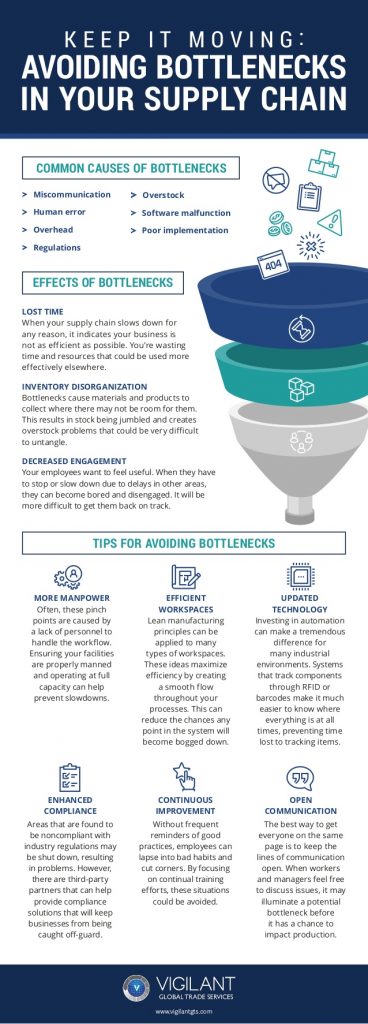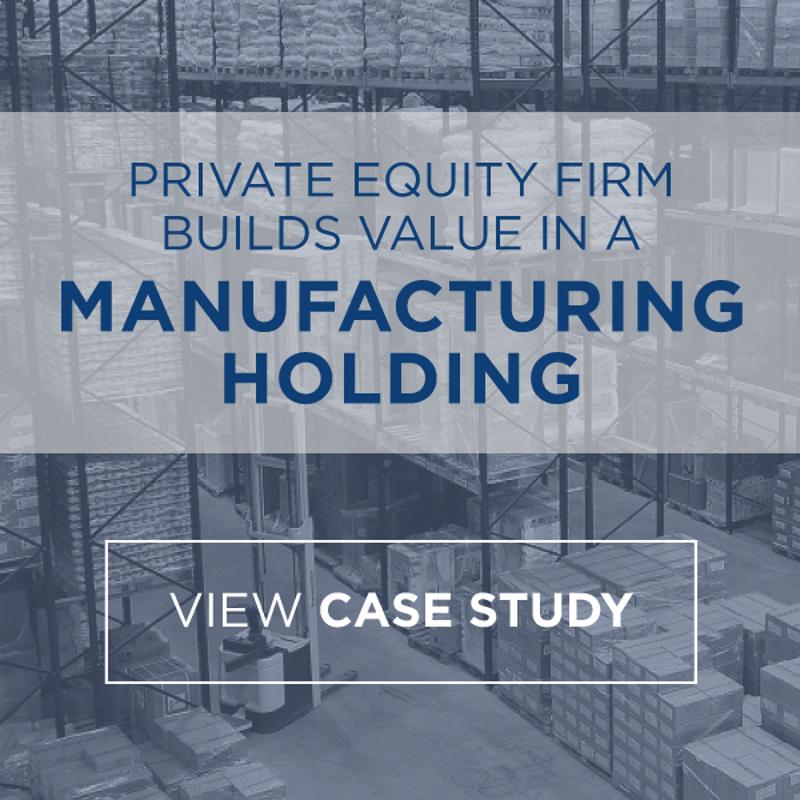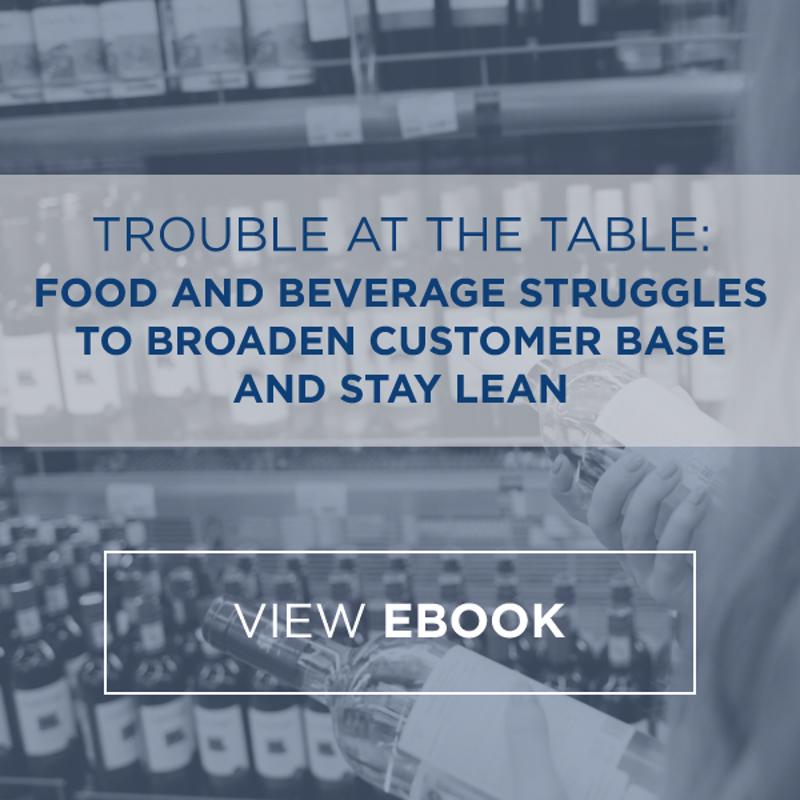-
Subscribe to Blog:
SEARCH THE BLOG
CATEGORIES
- Aerospace
- Asset Maintenance
- Automotive
- Blog
- Building Products
- Case Studies
- Chemical Processing
- Consulting
- Food & Beverage
- Forestry Products
- Hospitals & Healthcare
- Knowledge Transfer
- Lean Manufacturing
- Life Sciences
- Logistics
- Manufacturing
- Material Utilization
- Metals
- Mining
- News
- Office Politics
- Oil & Gas
- Plastics
- Private Equity
- Process Improvement
- Project Management
- Spend Management
- Supply Chain
- Uncategorized
- Utilities
- Whitepapers
BLOG ARCHIVES
- June 2025 (4)
- May 2025 (1)
- April 2025 (1)
- March 2025 (1)
- February 2025 (4)
- January 2025 (4)
- December 2024 (4)
- November 2024 (2)
- October 2024 (6)
- September 2024 (5)
- August 2024 (5)
- July 2024 (6)
- June 2024 (3)
- May 2024 (3)
- April 2024 (4)
- March 2024 (3)
- February 2024 (4)
- January 2024 (5)
- December 2023 (2)
- November 2023 (1)
- October 2023 (6)
- September 2023 (3)
- August 2023 (4)
- July 2023 (2)
- June 2023 (3)
- May 2023 (7)
- April 2023 (3)
- March 2023 (3)
- February 2023 (5)
- January 2023 (6)
- December 2022 (2)
- November 2022 (5)
- October 2022 (5)
- September 2022 (5)
- August 2022 (6)
- July 2022 (3)
- June 2022 (4)
- May 2022 (5)
- April 2022 (3)
- March 2022 (5)
- February 2022 (4)
- January 2022 (7)
- December 2021 (3)
- November 2021 (5)
- October 2021 (3)
- September 2021 (2)
- August 2021 (6)
- July 2021 (2)
- June 2021 (10)
- May 2021 (4)
- April 2021 (5)
- March 2021 (5)
- February 2021 (3)
- January 2021 (4)
- December 2020 (3)
- November 2020 (3)
- October 2020 (3)
- September 2020 (3)
- August 2020 (4)
- July 2020 (3)
- June 2020 (5)
- May 2020 (3)
- April 2020 (3)
- March 2020 (4)
- February 2020 (4)
- January 2020 (4)
- December 2019 (3)
- November 2019 (2)
- October 2019 (4)
- September 2019 (2)
- August 2019 (4)
- July 2019 (3)
- June 2019 (4)
- May 2019 (2)
- April 2019 (4)
- March 2019 (4)
- February 2019 (5)
- January 2019 (5)
- December 2018 (2)
- November 2018 (2)
- October 2018 (5)
- September 2018 (4)
- August 2018 (3)
- July 2018 (2)
- June 2018 (4)
- May 2018 (3)
- April 2018 (3)
- March 2018 (2)
- February 2018 (2)
- January 2018 (1)
- December 2017 (1)
- November 2017 (2)
- October 2017 (2)
- September 2017 (1)
- August 2017 (2)
- July 2017 (2)
- June 2017 (1)
- April 2017 (3)
- March 2017 (3)
- February 2017 (2)
- January 2017 (2)
- December 2016 (2)
- November 2016 (4)
- October 2016 (4)
- September 2016 (3)
- August 2016 (6)
- July 2016 (4)
- June 2016 (4)
- May 2016 (1)
- April 2016 (3)
- March 2016 (4)
- February 2016 (2)
- January 2016 (4)
- December 2015 (3)
- November 2015 (3)
- October 2015 (1)
- September 2015 (1)
- August 2015 (4)
- July 2015 (6)
- June 2015 (4)
- May 2015 (7)
- April 2015 (6)
- March 2015 (6)
- February 2015 (4)
- January 2015 (3)
CONNECT WITH US
Tag Archives: Continuous Improvement Programs
In life, bottlenecks crop up from time to time; moments where we’re stuck and can’t push through a problem. Patience may be the only remedy. In the manufacturing sector, however, bottlenecks can be a serious drain on productivity, revenue, efficiency, and asset utilization.
What does a bottleneck mean in manufacturing terms?
When people think casually of “bottlenecks,” they might think of forced congestion, like traffic on a multi-lane highway pinched down to a single lane for construction or emergency reasons. Traffic would be an apt metaphor, as bottlenecks on the road and those in a manufacturing plant are both concerned with throughput and achieving continuous flow.
However, in manufacturing, bottlenecks have their own clear-cut definition as well. According to the Institute of Industrial and Systems Engineers, bottlenecks occur when:
- A process step exceeds 100 percent utilization
- Capacity drops below or equals takt time
- Capacity drops below or equals demand
To identify bottlenecks, plant managers ought to utilize operational data and tighten their focus on steps in assembly that meet these specifications or come close. However, seasoned plant employees and equipment operators may be able to sense and point out potential bottlenecks without crunching the numbers.
What do bottlenecks look like on the plant floor?
For some manufacturing processes, bottlenecks are easy to spot. For instance, if asset operators in a bottling facility – to continue with today’s theme – notice visible accumulation of goods clogging a labeler, chances are the labeler is the issue, so long as all other operations appear to be functioning to capacity.

“One common indicator of a bottleneck is inventory overabundance.”
Other times, bottlenecks are not as readily apparent, but misbehaving processes ancillary to production may clue plant managers into trouble elsewhere. One common indicator of a bottleneck is inventory overabundance. When manufactures have aligned inventory needs against demand properly, inventories should remain relatively lean. Materials overflow in that context, therefore, would signal capacity issues somewhere in production. All that’s left to do is hunt them down and sort them out.
How can manufacturers overcome bottlenecks?
Once plant managers locate their bottleneck, they must perform three basic functions to formulate a solution. First, they must temporarily reduce the capacity of the entire process, carefully watching how a bottleneck functions for any observable performance problems.
Second, upon gathering a few notions as to what may be creating a bottleneck, plant managers must then conduct root cause analysis on each. Root cause analysis involves tracing the conspicuous bottleneck issue back to its true catalyst. Perhaps it’s as simple as a mechanical failure, or maybe as comprehensive as accidental overproduction.
Finally, after arriving at the bottleneck’s root cause, plant managers should assess whether it is a long- or short-term concern. Long-term concerns may require organizational change to correct the issue once and for all, but may require scheduled maintenance or production downtime to finalize the fix.
Short-term concerns generally correct themselves with little to no intervention. However, in the meantime, plant managers may feel more secure in their operations by decentralizing capacity over multiple employees or machinery. That way, should an out-and-out failure occur, manufacturers minimize the effect of downtime on productivity.
Trade advisory consultants at Vigilant Global Trade Services, a turn-key solutions provider for every aspect of global trade management, configured a detailed infographic illustrating how to avoid bottlenecks in your supply chain:
Contact us today to learn more about how you can avoid manufacturing bottlenecks and optimize your operations.
“It is just not the right time.” Business leaders bring out this all-too-common excuse when confronted with the notion of process improvement, often pairing the statement with promises of future operational advancement initiatives. Why? There are several common reasons. For instance, a good number of executives operate with the impression that frontline employees, including those in managerial positions, do not want change.
Back in 2016, leadership coach and New York Times bestselling author Mark Murphy surveyed approximately 2,100 business leaders and found that more than 37 percent believed that all employees preferred sticking to the status quo rather than pursuing change. Other executives are reticent to devote company resources to process improvement efforts whose results could vary, depending on implementation and long-term follow-through. These and other rationales give decision makers in the c-suite all the ideological ammunition they need to push off shop-floor optimization indefinitely.
In all, these business leaders are not detached from reality. Employees do fear change – Murphy discovered that 45 percent were more comfortable maintaining existing workflows – and haphazard spending can lead to significant budgetary damage. However, the risks that accompany operational stagnation are much greater than those associated with internal resistance and aggressive budgeting.
The modern marketplace dictates that organizations across all sectors seek out improvement wherever and whenever possible. Those that cling to the status quo typically find themselves suffering losses as a consequence of unyielding operational rigidity, losing ground to forward-thinking competitors, or grappling with mass customer attrition as past patrons seek out new product or service providers that can more effectively meet their increasingly intense expectations. Here are some of the reasons why now is always the right time for process improvement:
1. Changing marketplace conditions
The global marketplace never stops evolving due to the arrival and departure of overarching economic and technological developments. The emergence of protectionist trade policy, particularly in the U.S., is perhaps the most consequential event affecting the market. In April 2017, the Trump administration instituted sweeping tariffs on Canadian softwood lumber imports, per The New York Times. The Department of Commerce, at the behest of the White House, imposed tariffs of between 3 percent and 24 percent on the wood in retaliation over what the DoC deemed underhanded trade practices. Leaders within the commercial and residential construction and development sectors reacted with disappointment, claiming that the action would ultimately increase home prices and hurt consumers. This predicated outcome ultimately came to pass, as builders passed on their increased overhead expenses to buyers, The Times reported.
A similar scenario unfolded in May 2018, when the Trump administration called for increased duties on imported aluminum and steel, according to The Wall Street Journal. DoC officials imposed duties of 10 percent and 25 percent on aluminum and steel, respectively, a major move that sent shock waves across numerous industries – most notably, the automotive space. While domestic automakers normally source the metal used to make vehicle frames from American mills, these entities leverage large amounts of imported aluminum and steel to create ancillary components. As a consequence, the overhead costs associated with the production of these parts rose significantly following the implementation of the duties, increasing vehicle prices by hundreds and, in some cases, thousands of dollars.
Marketplace shifts of this nature are immensely disruptive to enterprises across countless industries and occur with regularity. However, businesses can mitigate the financial fallout and keep their footing by exploring and implementing process improvements that facilitate organizational scalability and ultimately allow them to make the best out of bad situations.
2. Increasing competitor capabilities
The emergence of sophisticated yet reasonably priced information technology services and solutions has leveled the operational playing field, lending small- and medium-sized companies the shop floor capabilities needed to carve out a considerable market share, even among larger, more established competitors. An estimated 43 percent of businesses worldwide have allocated more resources to digitization efforts in 2019, intent on putting into place the latest enterprise technologies, including artificial intelligence, business intelligence, and internet of things solutions, according to the Enterprise Mobility Exchange.
Of course, executives are not putting their faith in technology alone, as approximately 42 percent are supplementing new IT infrastructure with major process improvement efforts meant to bolster efficiency and boost revenue gain, per research from Red Hat. In short, organizations everywhere are pursuing operational advancement at scale, via multiple means.
Executives sitting on the outside looking in on this widespread push for improvement have no choice but to embrace progress and search for strategies that might make their respective companies more viable. Even those overseeing veritable industrial empires should take this approach, as marketplace fragmentation can bring down the biggest players.
3. Rising customer demands
Modern consumers are notoriously demanding, a phenomenon most analysts pin on both the emergence of advanced consumer technologies and the ecommerce revolution. Unfortunately for businesses, these buyers become more emboldened with each passing year, continually raising their expectations.
For instance, shoppers are no longer content with mobile application access or stock delivery services, researchers for JDA found. They expect retail companies to maintain robust on-the-go shopping experiences that feature seamless payment and data security components, while also offering accelerated shipping services in line with Amazon Prime. Businesses in the food and beverage industry are experiencing similar pressures, as buyers push them to adopt all-natural ingredients and provide food labeling with exhaustive ingredient lists. And, once these organizations meet such demands, consumers will undoubtedly come up with more.
Pursuing process improvement is perhaps the only way organizations can keep up with customer expectations, remain relevant, and ultimately find sustainable success.
All of these variables – marketplace change, competition, and customer demand – never stop evolving, which means the right time for process improvement could conceivably be “always.” Embarking on such programs is, of course, no easy task. In fact, most businesses need external assistance of some kind to get the job done. Here at USC Consulting Group, we have been helping companies optimize their operations for decades, leveraging proven techniques and tools that ease change and lay the foundation for growth and continuous improvement.
Contact us today to learn more about our work.
In March 2010, then President Barack Obama signed into law the Patient Protection and Affordable Care Act and ushered in the era of value-based health care. While various groups within the medical community had been pursuing this outcome for decades, the passage and enactment of the legislation greenlit the creation of regulatory infrastructure needed to promote and facilitate widespread adoption among health care providers, medical device makers and pharmaceutical firms, according to research published in the journal Current Reviews in Musculoskeletal Medicine. Experts predicted the effects of this would ripple across numerous health care-adjacent industries – most notably, the life sciences space.
Did this transformation unfold as expected? Now almost a decade removed from the signing of the ACA, it is possible to assess how the emergence of value-based care has impacted this key sector.
Grappling with operational change
In the immediate aftermath of the legislation, the Centers for Medicare and Medicaid Services swapped the volumetric provider repayment models of the past for those centered on patient outcomes. This modification incentivized hospitals to embrace value-based workflows that reduced the likelihood of readmission and eliminated unnecessary costs to patients. Businesses in the life sciences sector were ultimately forced to grapple with this transformation, as health care providers encouraged them to adopt value-based contracting practices.
The organizations that accepted this challenge made significant adjustments to their operations, incorporating evidence-gathering and patient-engagement methodologies into existing research and development processes with the intention of cultivating effective products that would bolster patient outcomes and therefore generate revenue. However, some companies in the life sciences space resisted, including pharmaceutical firms, many of which leveraged their power in the marketplace to push back against providers promoting value-based care. Just one-quarter of drug companies have adopted value-based contracting strategies, according to PricewaterhouseCoopers.
More transformation on the horizon
The value-based care transformation continues today, despite recent policy changes related to the ACA. Why? The concept works as intended. Almost 80 percent of insurance companies saw care outcomes improve between 2016 and 2018, while watching overall medical costs decrease by more than 5 percent over the same span, researchers from Change Health Care found. This is partially why 75 percent of providers are lobbying vendors in the life sciences sector and other industries to enter into value-based contracting agreements, according to Premier.
In the past, organizations in the industry may have been able to ignore these calls. However, the maturing state of value-based care and pressure from consumers is making this difficult. Here in the U.S., an estimated 80 percent of individuals using medication say pharmaceutical pricing is unreasonable, analysts for the Kaiser Family Foundation discovered. Politicians on both sides of the aisle agree and have expressed a willingness to intervene on patients’ behalf.
With this state of affairs in play, organizations in the life sciences arena would be wise to evaluate their internal workflows and move forward with modifications that prepare them for the value-based future. Here at USC Consulting Group, we have been helping businesses optimize their operations for decades, leveraging proven techniques and tools that ease change and lay the foundation for growth.
Contact us today to learn more about our work.
From foundation concrete to tile adhesive, the average house contains many different components. Building materials manufacturers are, of course, responsible for producing these essential supplies. Collectively, they are the backbone of the American housing market. These businesses are poised to continue their successes into the new year, a comforting sign for U.S. home builders, especially those who intend to accelerate operations in 2019 to bridge the inventory gap, according to research from the National Association of Realtors.
That said, building materials manufacturers will also face significant obstacles throughout the coming year. Here are a few of those challenges and how they might affect the organizations that form the foundation of the domestic housing market:
Wildfires
More than 52,300 separate wildfires burned through approximately 8.5 million acres in 2018, according to analysts for the National Interagency Fire Center. While neither of these figures surpassed historic highs, together they still paint a disturbing picture. Between 2008 and 2017, roughly 60,300 wildfires occurred annually, each one burning around 105 acres of land, but in 2018 the average wildfire claimed 163 acres. Suffice it to say, wildfires are getting worse, so their repercussions on related industries, such as building materials manufacturers, will continue to escalate.
This disturbing development is especially concerning to businesses in the forestry industry, which supplies the softwood and hardwood used in home construction. While reports from the Department of Agriculture show that forest inventories have steadily increased over the last seven decades, the recent intensification of wildfires threatens American woodlands and, by extension, the lumber suppliers that depend on them. Unfortunately, the NIFC believes that significant fire activity is likely to unfold over the course of 2019, meaning timber manufacturers will have to grapple with the threat of wildfire over the coming months and look for ways to mitigate the associated production risks.
America’s global trade showdown
When the Trump administration announced that it would increase duties on aluminum and steel imports back in March 2018, leaders in the home building space immediately criticized the decision. Randy Noel, chairman of the National Association of Home Builders, said the then-proposed tariffs would “translate into higher costs for U.S. consumers and businesses.” American Institute of Architects CEO Robert Ivy offered a similar sentiment, concluding that “inflating the cost of materials will limit the range of options [that architects] can use while adhering to budgetary constraints for a building.”
However, these voices failed to persuade the Department of Commerce, which enacted the tariffs in May. In the months since, material costs have indeed increased significantly, according to data analysis from the Associated General Contractors of America. Over the same span, the White House has issued additional import duty increases, further weighing down building materials manufacturers, their clients, and American homebuyers.
While America’s global trade conflicts have cooled as of late, President Trump has reiterated his desire to move forward with similar trade policies, NBC News reported. Enterprises in the building materials space could encounter new challenges linked to tariffs in 2019. Again, businesses in the industry will likely have to engage in some operational reorganization to reduce the bottom-line impact of any new duties.

A hot housing market
American home builders have struggled to meet demand in recent years, forcing buyers to participate in intense bidding wars, but developers are working hard to increase inventories, according to research from the U.S. Census Bureau. Residential permits, starts, and completions rose in 2018, signaling the arrival of a building construction boom. This activity is expected to continue into 2019, during which time single-family housing starts are forecasted to increase, analysts for the NAR found. Building materials manufacturers may find themselves fielding higher order volumes, even as sourcing gets more complicated and supplies dwindle.
Together, these developments pose serious challenges to organizations navigating the building materials manufacturing arena and may necessitate the implementation of new shop-floor techniques and tools. Here at USC Consulting Group, we have been helping businesses of all kinds adjust to new marketplace conditions, implementing on-the-ground strategies that lay the groundwork for success.
Connect with USCCG today to learn more about our work and how we can help your company prepare for the challenging year ahead.
Modern businesses in almost every sector regularly greenlight operational improvement projects – internal initiatives designed to address serious shop floor deficiencies, boost product quality and output, and ultimately bolster the bottom line. However, a surprisingly large number of these efforts fail on multiple fronts, according to research from the Project Management Institute, an international professional organization for in-house strategic coordinators. For instance, an estimated 16 percent of the organizations that embarked on internal projects in 2017 experienced outright failure and surrendered one-third of their respective budgets in the process. These businesses attributed project failure to numerous variables, including ineffective vision-setting and poor communication.
How can enterprises looking to upgrade their operations via internal improvement programs avoid these missteps and the associated fallout? There are multiple solutions out there. However, few are as effective as strategic roadmaps. During this process, project stakeholders establish a long-term collaborative framework meant to streamline execution and increase the likelihood of an ideal outcome. Project teams essentially create the blueprints for success, making it easier for them to carry out key tasks and move forward without getting sidetracked or making major strategic missteps. That said, effective roadmapping requires serious effort. Here’s how internal improvement stakeholders can get started with this approach:
Unpack the Kaizen event
The strategy of a roadmap actually centers on specific collaborative meetups called Kaizen events. These assemblies come from the well-known Six Sigma process improvement methodology, which emphasizes iterative, efficient operational advancement. Kaizen events serve several key purposes, including:
- The assembly of all project stakeholders
- The evaluation of existing project workflows
- The development and deployment of process improvements
- The solicitation of clear buy-in from all project stakeholders
These are essential collaborative functions that might go unaddressed in looser project planning strategies. Additionally, team members often attend multiple Kaizen events throughout the lifespan of an internal initiative. This prevents the emergence of collaborative roadblocks or misunderstandings that could lay the groundwork for failure. However, businesses cannot simply put meetings on the calendar and expect their teams to communicate flawlessly and address all relevant pain points unprompted – there must be structure. This is where a strategic roadmap enters the picture.
Develop the Kaizen roadmap
Agendas build the foundation for effective meetings. The Kaizen roadmap does something similar, acting as an unchanging touchpoint for project team members in all departments. Most feature timelines overlain with specific collaborative tasks and sequential relationship details. Kaizen roadmaps also display the required effort levels and optimal durations associated with each scheduled task. This brand of planning makes it easier for teams to focus in on and address key variables in a timely manner.
What duties might a Kaizen roadmap include? Again, this varies depending on the project. That said, there are some relatively standard tasks. For instance, group data analysis is almost always a key activity, as Six Sigma, the genesis of the Kaizen event, emphasizes metric-based decision making. Additionally, businesses that host roadmapped gatherings of this kind often include time for current state evaluation, during which project stakeholders evaluate the status of a given initiative and assess the efficacy of its workflows.
In the end, strategic project management roadmaps centered on Kaizen events can make an immense impact on the shop floor, allowing businesses to roll out internal improvement efforts that generate actual return on investment. Here at USC Consulting Group, we have been helping companies embrace this approach for decades, lending them the guidance they need to bolster project team performance and realize revenue gains.
Contact USCCG today to learn more about our work.
Executives and shop-floor stakeholders have been pursuing operational excellence for decades, but a fraction of these industrial idealists have actually achieved it. In fact, just 32 percent of supervisors and one-quarter of employees believe that their organizations boast true operational excellence, according to research from Wrike.
Business leaders who have yet to cultivate workflows that adhere to the guiding principles of operational excellence – treating customers and employees with respect, embracing scientific thinking and emphasizing value creation, according to the Shingo Institute – can make progress toward this goal in 2019 by implementing these four workable strategies for achieving operational excellence:
1. Define operational excellence
Analysts for the Institute for Operational Excellence believe that manufacturing firms that have achieved operational excellence make it so that “each and every employee can see the flow of value to the customer, and fix that flow before it breaks down.” This is a tall order, even for larger firms with significant financial resources and manpower. Even so, enterprises in any industry can set themselves up for success by unpacking the idea of operational excellence and mapping out how it might manifest on the shop floor. The IOE recommends leveraging operational flow charts, which help contributors at all levels visualize the progress of value creation. For instance, a chemicals manufacturing firm might dodge procurement issues by building flexibility into its supply chain and developing relationships with multiple raw materials providers, along with shipping and logistics contingencies to match.
2. Establish and monitor KPIs
Achieving sustained operational excellence is impossible without access to baseline performance data from your shop floor. Unfortunately, too many manufacturers either maintain poor data collection and analysis processes or forgo these essential activities altogether. Both actions have the same outcome: dysfunction, a deep lack of understanding, and an inability to strategize intelligently.
Businesses that want to avoid these end results and achieve operational excellence must focus on implementing fast and accurate measures for collecting data and assessing key performance indicators. Automation is important here, as manual methods almost always lead to cumbersome amounts of data entry, errors, and eventually abandonment. Best-in-class manufacturers that have managed to achieve operational excellence leverage automated KPI-collection setups that deliver real-time intelligence to decision-makers, who, in turn, can address production roadblocks and move the operation forward in a timely manner.
3. Empower the employees
Sprinkled in among the more technical best practices included in the Shingo Institute’s guiding principles of operational excellence are some gentler strategies centered on cultivating effective leaders and executors – two key ingredients in an industry-leading manufacturing enterprise.
Principle No. 1, which advises firms to respect workers by empowering them through professional development initiatives, is perhaps the most important. When employees feel empowered and engaged, they take ownership of their work and pursue individual excellence, which contributes to the organization as a whole. However, many businesses struggle in this area. In fact, a mere 34 percent of American workers say they are engaged on the job, according to research from Gallup. Worse yet, the manufacturing sector ranks at the bottom for employee happiness, analysts for TINYpulse found. Companies must overcome these obstacles to achieve operational excellence, which means investing in training programs and other initiatives designed to keep key shop-floor contributors engaged and focused on driving value.
4. Facilitate continuous improvement
Operational excellence is not the end all be all. What matters more is continuing forward with augmentation and understanding that various internal and external variables can easily knock previously rock-solid processes off course, which can cause significant issues that inhibit value creation and drag down the bottom line. Continuous improvement is the engine that drives sustained success. Top performers in the industrial sector facilitate this never-ending search for betterment by deploying risk identification and mitigation methodologies, which make it easier for shop-floor stakeholders to spot burgeoning problems and develop upgraded processes to address them. For example, an automotive manufacturer with access to strong asset management processes – staples of organizations with effective continuous improvement workflows – can identify small mechanical kinks before they devolve into downtime-causing catastrophes that wreck productivity.
Businesses in the manufacturing space can move closer to achieving operational excellence by adopting these impactful best practices. Of course, executing these strategies at scale might prove difficult for some. Here at USC Consulting Group, we have been helping manufacturers optimize their operations for decades, leveraging proven techniques and tools that accelerate change and lay the foundation for growth.
Contact us today to learn more about our work in the manufacturing arena and how we can help your firm pursue operational excellence in 2019.
Food and beverage trends leave lasting marks on production best practices, but one recent development could very well transform operational standards across the food and beverage space.
In recent years, consumers worldwide have embraced free-from foods, which omit certain ingredients, additives, or contaminants, such as gluten, antibiotics, or pesticides, Bloomberg reported. Analysts at Euromonitor predict that free-from food sales in the U.S. will grow 15 percent between 2017 and 2022, creating $1.4 billion in revenue. Businesses in the food and beverage space certainly stand to benefit from this trend, but many have found that free-from food production requires significant changes to their shop floors. Even so, it appears this phenomenon is here to stay, meaning these companies must embrace free-from foods production or risk losing their footing in the marketplace.
Understanding the rise of free-from foods
The free-from food movement began in the late 2000s and early 2010s, as consumers embraced wholesome eating habits at the behest of public health officials and popular fitness and nutrition experts. Sales of packaged foods dropped significantly during this period, while interest in organic products soared. At the same time, food allergy awareness increased drastically, leading people of all ages to scour their diets for problematic ingredients.
By 2014, approximately 60 percent of Americans attested to eating larger quantities of fresh fruits and vegetables, while 46 percent said they were avoiding processed items containing artificial colors and flavors, according to researchers from Nielsen. By 2015, 51 percent of U.S. residents reported having an understanding of common food allergens, according to survey data from the American College of Allergy, Asthma and Immunology. Dairy, gluten, antibiotics, pesticides and other once-standard-issue additives became anathema to large numbers of consumers, forcing businesses in the food and beverage industry to rethink their processes and expand their product lines.
Grappling with ground-up change
Major companies in the food and beverage space have transformed their production workflows to meet the expectations of free-from advocates.
According to Bloomberg, General Mills recently put the finishing touches on an eight-story structure that sorts through oats destined to become Cheerios and remove any traces of gluten. It took five years to construct the facility, which can process 1 billion pounds of oats per year. Although Cheerios do not contain gluten, General Mills built the behemoth sorter anyway, ostensibly to ensure gluten particles from other farms near its oat-harvesting operations would not make their way into finished product. General Mills is likely to benefit from this move; almost one-quarter of U.S. consumers consider gluten-free alternatives necessary, Nielsen discovered. In 2018 alone, these individuals are expected to spend more than $4.4 billion on such products, according to MarketsandMarkets.
Poultry producer Butterball took similar steps back in 2017, rolling out an entire line of antibiotic-free turkey products, all of which are produced at a state-of-the-art facility in Mount Olive, North Carolina. Here, production teams carefully handle antibiotic-free poultry to ensure it does not come into contact with conventional items. While this has certainly complicated shop floor operations, the company’s embrace of antibiotic-free production and packaging methods has certainly paid off. Sales of Butterball antibiotic-free ground turkey saw a year-over-year increase of 71 percent in the third quarter of 2018, as free-from food devotees flocked to the new offerings, according to Bloomberg.
However, the steps these and other food and beverage producers have taken are not meant to meet the needs of consumers in a niche market. Free-from foods could become the norm. While not all eaters identify with this movement, a majority are embracing healthier eating habits and therefore becoming more discerning about their food choices, habits that might translate into an across-the-board embrace of items now associated with the free-from foods phenomenon.
Preparing for the free-from future
Food and beverage producers that have yet to develop products catering to the growing slice of free-from consumers would be wise to take action quickly or risk surrendering serious ground in the marketplace.
Process evaluation and improvement are, of course, critical to managing change of this kind, especially around raw material acquisition, an essential variable in the creation of shop floor processes capable of producing free-from food products at scale. But production changes constitute only half the equation. Not only do consumers want food and beverage makers to provide free-from products, they also demand that companies outfit such offerings with labels featuring complete ingredient lists for total transparency, according to Food Processing. In the end, firms that take these steps can effectively prepare for the future of food and beverage production and find success in the years to come.
Here at USCCG, we’ve been working with businesses across numerous industries for more than 50 years, including the food and beverage industry, helping them as they adapt to marketplace transformations of all kinds. Connect with us today to learn more about our work.
Marketplace forces are transforming the pulp and paper manufacturing space, from mass digitization to the maturation of the paperless movement. Many have responded by reinventing their production processes in an effort to access alternative revenue streams and reduce overhead costs, which is particularly consequential as both lumber and sawlog prices continue to surge, according to research from Benzinga.
But how exactly are pulp and paper manufacturers trimming the costs of production? Here are some proven optimization strategies in use in the industry today:
1. Waste reduction
Pulp and paper manufacturing facilities generate a lot of waste. In fact, one researcher found that the average pulp and paper mill produces between 40 and 50 kilograms of dry sludge waste per ton of finished paper product. This byproduct creates considerable operational complexity. Companies must have hazardous waste workflows in place to properly dispose of industrial sludge, supporting infrastructure that greatly affects the bottom line. For instance, organizations must devote considerable resources to establishing processes that comply with Environmental Protection Agency and Occupational Safety and Health Administration standards. Of course, the very presence of waste, especially in great volume, indicates raw material disuse which carries its own budgetary implications.
In recent years, leading pulp and paper manufacturers such as the International Paper Company have turned their focus to reducing waste and the expenses that come with it. IPP implemented new milling techniques that allow production teams to incorporate once-wasted lose fibers into product mixes. The company also boasts robust recovery and reuse programs, which facilitate further reductions in waste. In 2017, IPP engineered a total wastage decrease of 9 percent. The pulp and paper powerhouse intends to reduce manufacturing waste by 30 percent within two years, with the larger goal of achieving zero wastage sometime in the near future.
2. Production optimization
Modern pulp and paper manufacturing facilities leverage fairly advanced production processes, but inefficiencies are still rampant – most notably, because of ineffective supply chain transparency, according to The Forest Trust. How are businesses in the industry addressing these issues? Production optimization via digitization.
Leaders in the space have put into place large-scale data collection programs wherein operational teams leverage industrial sensors and robust information processing, sharing and storage platforms to gather transformative shop floor insights. This data can anchor production improvements with serious bottom line-building potential. For example, one U.K.-based pulp and paper manufacturer increased annual revenues by 11 percent by rolling out a data-backed overall equipment effectiveness initiative, according to the Confederation of European Paper Industries.
3. Strategic sourcing
With raw material costs increasing, companies in the sector must embrace alternative procurement processes to keep overhead expenses under control. Strategic sourcing is perhaps the most effective method for accomplishing this lofty aim, which entails ensuring vendor contract adherence, conducting regular sourcing reviews, and forming relationships with multiple materials providers to achieve the best prices possible. These strategic sourcing practices allow pulp and paper manufacturing companies to keep the cost of production as low as possible, even as raw material prices increase.
Organizations in this niche industry must work quickly to reduce operating costs and build room into the budget to address rising raw material expenses. These strategies can make a significant difference by enabling pulp and paper producers to lay the groundwork for sustained success. But implementing such changes alone can be difficult. USC Consulting Group can help, leveraging decades of consulting experience to help firms in the space catalyze cost reduction.
Contact USCCG today to learn more about our work in the pulp and paper manufacturing space.
Businesses seeking to improve internally often focus considerable energy on trying to transform shop-floor operations through the introduction of new equipment, production processes or software. While such additions can surely lay the groundwork for change, these modifications alone cannot catalyze true operational transformation. The employees responsible for managing mission-critical production workflows must change as well. Tools are only as effective as the professionals who wield them.
To bolster worker performance and thereby meet internal improvement goals, organizations must drive behavioral change by promoting innovative workplace practices that pair well with new and improved processes and production assets. Here are the five secrets to driving such change:
1. Start from the top
Executives shape company culture through their actions, providing the behavioral blueprint for employees in every department. Enterprises embarking on internal improvement efforts should utilize this top-down approach to behavioral osmosis by leveraging influential leaders within the initiatives accompanying significant change on the shop floor. In fact, studies show that this is necessary for sustainable, organization-wide behavioral change. According to a study from Harvard Business Review, 70 percent of enterprise transformation efforts fail. And a lack of senior leadership is often why these businesses cannot bring about the cultural changes necessary to innovate their practices well. How can businesses avoid this unwanted outcome?
Leaders must examine their own behaviors and pinpoint conduct that undermines organizational flexibility and innovation. For instance, many executives are guilty of transferring inapplicable experiences from their past to make decisions about the future. Others prevent growth by engaging in personal perfectionism, attempting to cultivate unimpeachable executive narratives by avoiding situations that might result in failure. When business leaders identify and root on these behaviors, they open themselves up to change, setting the stage for behavioral transformation across the business and facilitating true internal improvement. Learn more about personal behavioral change in INPLCenter’s article on why simple behaviors seem impossible to change.
2. Embrace technology
Enterprise technology is often framed as a product of behavioral change. This, of course, is an accurate perception. A significant number of companies launch internal initiatives aimed at reconditioning staff and providing them with the knowledge they need to embrace newer processes centered on the latest hardware and software.
But technology is sometimes employed to support change management activities prior to the unveiling of any large-scale organizational shifts, according to CIO. Many platforms facilitate behavior change by providing leaders valuable information about how employees function during day-to-day operations, lending these decision-makers the baseline data they need to implement changes that help workers get the most out of new operations. Some solutions leverage neuroscience to help professionals grapple with amended production best practices. Employees using these advanced tools can access training modules that break down complex operational subjects into digestible instructional exercises that promote behavioral change.
Cutting-edge information technology offerings of this kind can do a lot for organizations searching for actionable tools that can support behavior change across the businesses and prepare workers for new shop-floor workflows.
3. Market innovation internally
Marketing teams often launch and oversee internal initiatives aimed at promoting behavioral change. A majority of these campaigns are designed to promote regulatory compliance or raise morale, but businesses can leverage similar promotional programs to encourage behavior change, which, in the context of operational improvement, means embracing new processes and tools.
Incubation campaigns take this approach a step further, calling workers to get involved in organizational transformation by providing professional insights and offering up potential solutions to pressing problems. Inward-facing marketing initiatives of this kind can spark behavior change among professionals in all departments, showing them that their superiors are interested in growing the business through their talent and experience.
4. Search for operational issues
Sometimes, employees are unable to adopt more innovative behaviors because of systematic roadblocks. No matter how forward-thinking the professionals trapped within these workflows may be, the surrounding workplace structures make it impossible for these individuals to act on their innovative urges. This is why businesses looking to prompt behavioral change and unlock improvements that improve their bottom lines must work to streamline operational frameworks that might prevent employees from contributing meaningfully to wider cultural change.
5. Work with external collaborators
While businesses can achieve behavioral change on their own, many may encounter stumbling blocks that require outside expertise and a fresh perspective. Here at USC Consulting Group, we’ve been working with organizations across numerous industries for more than 50 years, helping them transform their operations and adapt to marketplace shifts of all kinds. Connect with us today to learn more about our experience in process improvement and change management.
Define your mine management operating system and close the gaps in productivity and workflows.
Mines are sprawling operations. Companies have to monitor large and numerous assets, from employees to equipment and minerals. Given the scale of these operations, many organizations have turned to data to inform their decision-making, initiatives and communications.
At the center of such plans is a Mine Management Operating System (MMOS). Without it, management may have trouble realizing gains and expectations. Yet with a clearly defined MMOS, mines can be become proficient in tactical, technical and technological responses.
With a structured MMOS, organizations can:
- Identify and close gaps in workflows.
- Discover opportunities for improved efficiency, effectiveness or optimization.
- More closely monitor operations for compliance.
To learn more, download our ebook “The Mine Management Operating System: A Foundation for Success” today.















